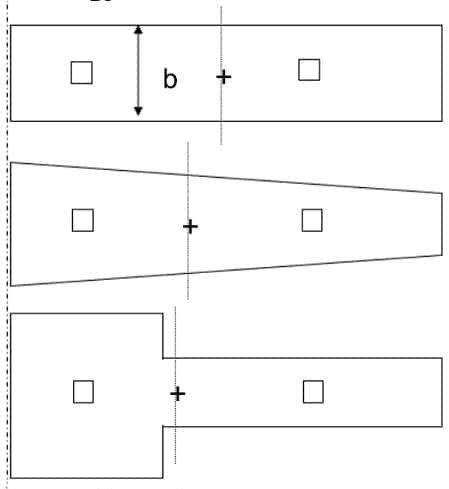A combined foundation is a type of foundation that consists of two pillars. If there are more than two columns, such a foundation is called a strip foundation.
A combined foundation is erected when the individual foundation cannot support the applied load alone or when there are two supports nearby.
What is a combined substructure?
It is a type of strip foundation constructed by combining two columns. The combination of columns can be done as described above. In favor of the construction of combined foundations, the following reasons can be highlighted.
- The increase in the axial load of the column led to an increase in the area of the individual foundations. When the pressure bulbs of individual foundations overlap, a high stress zone is created in the ground, which leads to… Failure of Shallow Foundations In these situations, we combine the foundations into a single foundation.
- If there are supports on the edge, we combine the foundation with the internal support.
- An increase in axial load and a decrease in the bearing capacity of the soil lead to an increase in the foundation area. This is also a reason to match the foundation.
Types of combined foundations
- Rectangular combined foundations
- Trapezoidal combined foundations
- Other molded foundations
- Strap foot
- Raft foundations
Rectangular combined base
As the name suggests, it has a rectangular shape and is the most used type of foundation.
The design and construction of these types of foundations are very simple compared to other irregular shapes. The length of the foundation and reinforcement does not vary.
With these types of foundations, the pillars can be in the middle or on the edge of the foundation. If there are boundary walls, we cannot continue the foundation onto the other property. Therefore, we need to build a pillar on the edge of the foundation.
The reinforcement details are also simple. There are two reinforcement networks for these types of foundations (upper network and lower network).
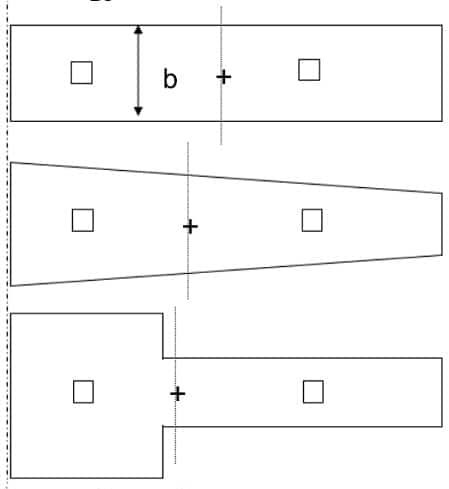
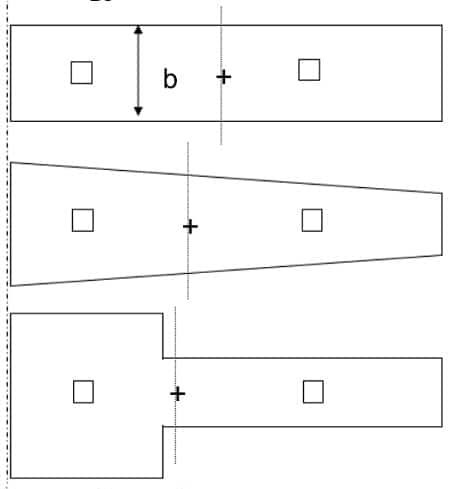
Trapezoidal combined foundations
The shape of the foundation may be determined by design requirements or foundation space limitations. These types of foundations are not very popular due to structural deficits in the construction industry.
Different foundation widths complicate construction. The length of all reinforcement placed in the shortest direction is different.
The trapezoidal shape and variation reduce the foundation area compared to a rectangular foundation of the same size. However, this type of foundation may not reduce construction costs.
Other forms of foundations
In addition to trapezoidal and rectangular shapes, there are other foundation shapes that consist of a combination of two supports. The following figure shows this type of foundation.
Furthermore, it is important to highlight that these types are not so common in civil construction and are only built for special occasions. As shown in the figure above, different types of foundations can be constructed depending on the needs of the subsoil.
Belt foundations
It is well known why we build strip foundations. We don't always need to build strip foundations. The insulated foundations themselves can act and support the applied loads. However, there are limitations regarding the eccentricity of the foundation.
As the axial load increases, the pressure in the column increases significantly. This leads to excessive settlement of the foundation and failure of the soil's bearing capacity. Therefore, to equalize the pressure under the foundation, we connect the eccentrically loaded foundation to the normal columnar foundation.
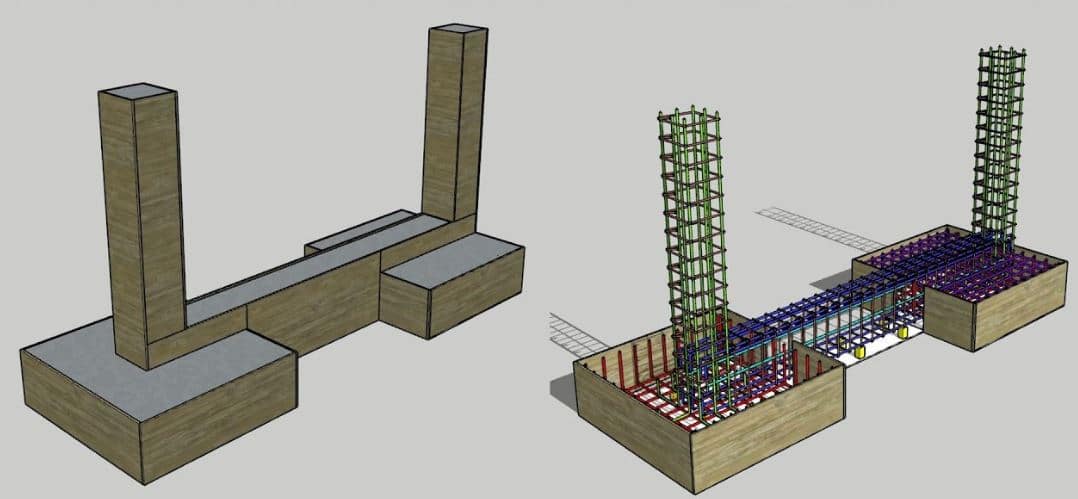
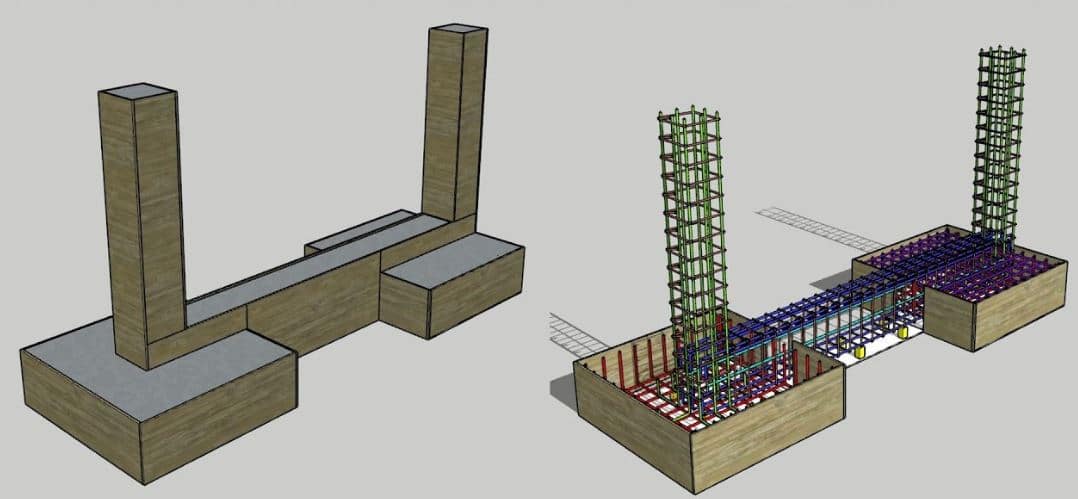
Slab foundations
The last variant of the combined foundation is the slab foundation. As already mentioned, we can use the slab foundation or the mat foundation from the combined foundation list. However, it seems sensible not to use this type of base.
It is a combination of all the supports in the structure. First we tried to construct the building on a single, isolated foundation. However, increasing the axial load of the column increases the foundation area.
If 66% of the foundation area is occupied by individual foundations, we have no choice but to opt for a slab foundation.
The planning and construction of slab foundations is not as complicated as Deep Foundations . However, the project will require a computer-aided analyst.
Plate thickness can remain the same or be increased at supports to improve flexural and shear strength. Particular attention should be given to drilling shear Design as needed to provide perimeter shear reinforcements or increase beam thickness.
How to design combined foundations
In this article, we will focus on the design of a two-pillar foundation. Let's see what steps to follow.
- Calculate the operational load of two supports supported on the foundation.
- Calculate the area of the foundation based on the allowable load capacity – this must be taken from the soil examined in the report.
Foundation area = (total useful load of the column) / (permissible load capacity)
- Select the substructure dimensions based on the calculated values. First we start with the width of the subframe.
- Now let's calculate the center of gravity. This is the point at which the net force acts. Since the foundation must be asymmetrical around this point, we can now calculate the length of the foundation.
- This calculation is an experimental process. To achieve the appropriate value, you may need to adjust the width and length of the foundation in the calculation.
- Now calculate the maximum pressure under the foundation.
- Calculate the bending moment equation along the foundation. Determine the maximum bending moment and shear forces.
- Designed for maximum bending moment and shared forces.
- Make those Reinforced Steel Detailing.
The worked example Combined foundation project For more information you can contact us.
Detailing Reinforcement of a Combined Foundation
Typically, a foundation connected to two columns has two networks because there are significant bending moments.
Shear connections are not common in this type of foundation. However, if necessary, we can provide shear connections if it is not possible to increase the thickness of the foundation to increase the shear capacity.
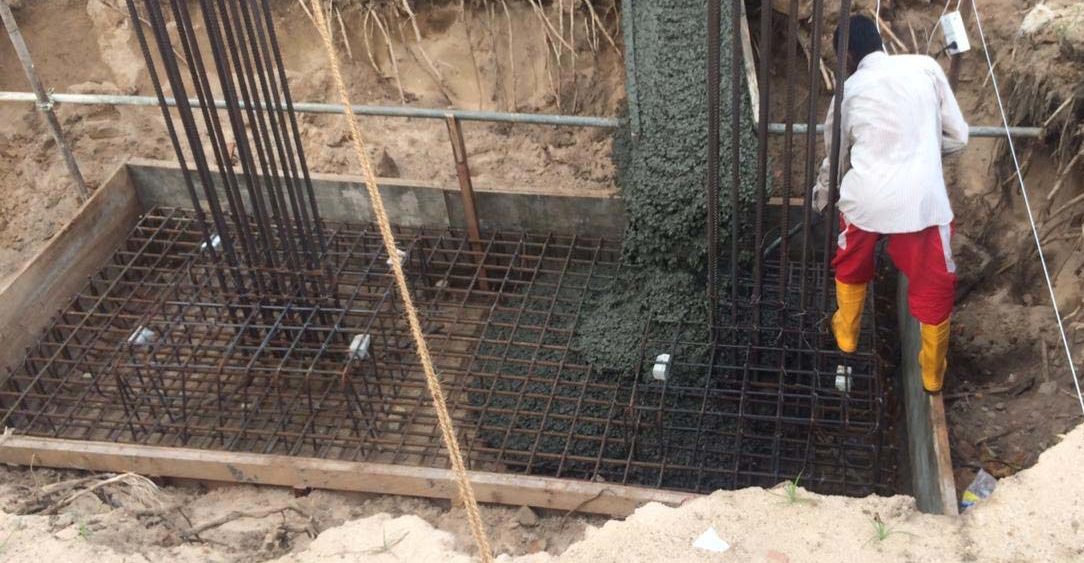
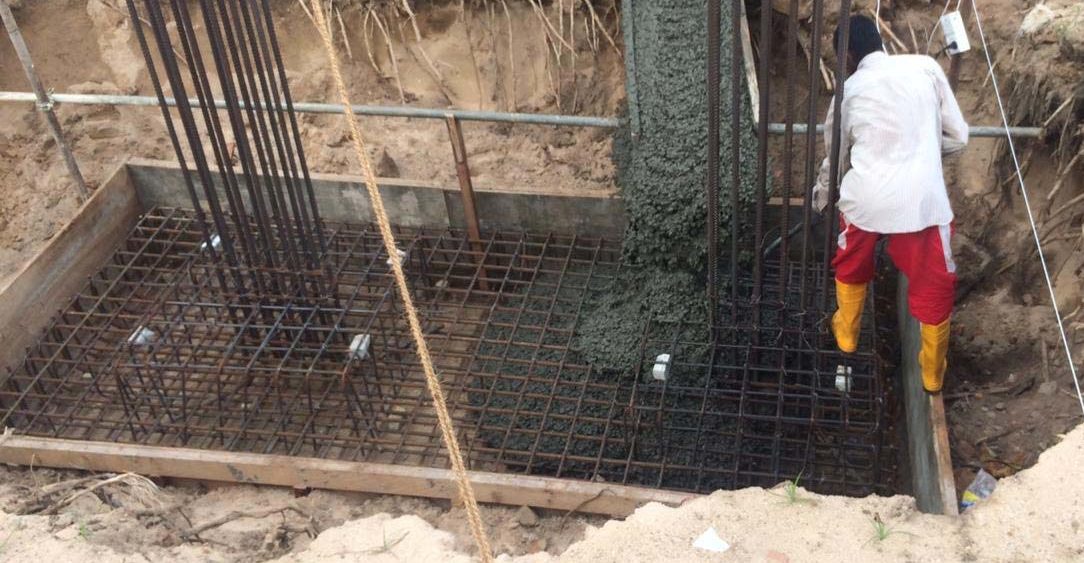
When the thickness of the foundation increases, it is necessary to provide lateral reinforcement to prevent the foundation from cracking due to thermal effects.
Factors to Consider During Design and Construction
- Foundation area: The foundation area is selected based on the axial load of the supports and the allowable bearing capacity of the soil. As two supports are combined, there is the possibility of increasing the foundation area more than necessary, resulting in reduced pressure under the foundation.
We select foundation areas based on the allowable load capacity of all foundations. If there are significant deviations in the foundation area, the pressure under the foundation will change. Different pressures under the foundation lead to different settlements in the foundation. Therefore, special attention must be paid when selecting the foundation area, especially if the soil has a low bearing capacity and is therefore more susceptible to higher settlements.
- Soil Improvements : To achieve the required bearing capacity of the soil, the soil needs to be improved as per the recommendations of the geotechnical investigation report. Soil stabilization or improvement measures for low-rise structures may be carried out under the strict supervision of the civil engineer.
As the structure is supported on the ground, it must have the necessary load capacity to support the load. Any weak soil defect that is not treated properly can lead to structure failure, foundation failure, foundation settlement, etc.
- Consolidation Processing: It is a long-term problem if we do not identify it in the initial phase of the project, before designing the foundations. Since the structure contains different types of foundations such as: Such as combined foundations and isolated foundations, special attention must be paid to the type of soil.
Necessary measures must be taken to prevent the foundation from sinking after construction. If this is not resolved in the early stages, many problems may arise that may be difficult to resolve. For example, sinking in the foundation can cause cracks in brick walls. If subsidence continues for a long period of time, repairing the cracks will not solve the problem. If the foundation continues to sink, cracks may appear again.
Therefore, as suggested in the article Soil types Necessary measures must be taken at the initial planning and construction stage.
Related articles
- Surface foundation
- Shallow foundations
- pillar foundation
- Foundations
- Deep foundations
- Foundation failure
- support
- Eccentrically loaded foundations
- Shallow foundation failure
- Pile slab foundations
- mat base
- Foundation pile
- Driven pile foundations
- Pile foundations
- Buoyancy pressure in foundations
- How to determine the type of foundation
- Excavation for foundation
- Foundation waterproofing
- Laying shallow foundations
- Slab foundations

